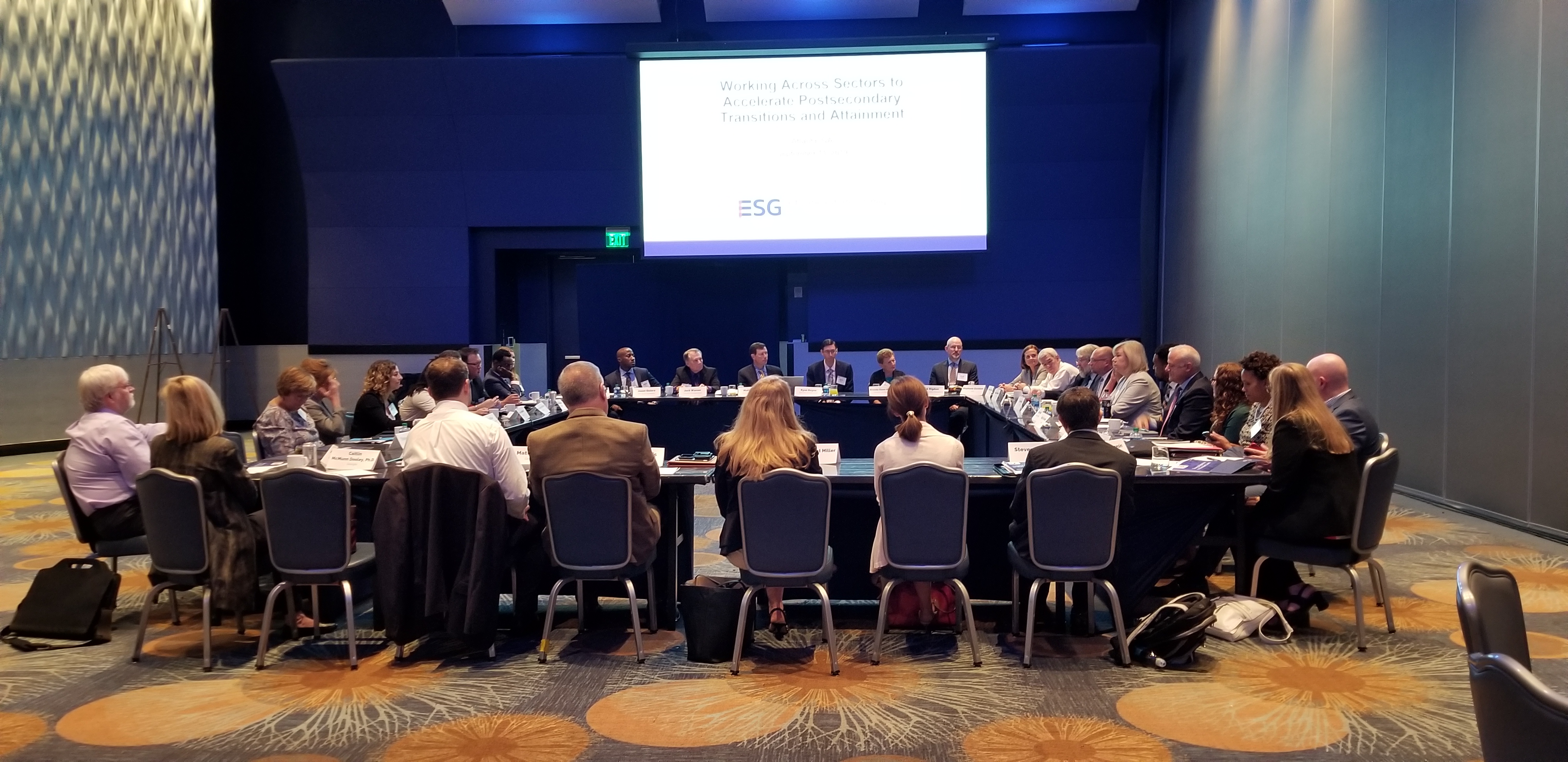Passing the Baton: State Leaders Must Collaborate Across Sectors to Accelerate Postsecondary Transitions

As the 2019 track and field world championships take place in Doha, Qatar this month, I am really looking forward to my favorite event: 4×100 relay. This event tops my list because of what it represents – teamwork at its best. While much of track can be considered an individual sport, relays require an intentional team effort. To be truly successful in a relay race, each runner must pass the baton to the next runner without losing momentum–and the best teams are able to execute this handoff with both runners at a full sprint. Teams spend significant time practicing the handoff because a poorly executed pass of the baton can lead to a loss.
The relay race is a good metaphor for opening more doors to economic opportunity for youth. Far too often, significant work is done to sprint students to the finish line of high school and then the baton is tossed across a chasm and we hope that someone on the other side is there to catch it and start running again. And the same happens as students transition from postsecondary education to the workforce. To successfully meet our workforce and attainment goals, we need everyone–K-12, higher education, and workforce leaders–to come together as one to ensure that the transitions across systems are seamless.
Earning a postsecondary credential of value—a certificate, associate, or bachelor’s degree—is the surest path to employment stability and family-sustaining wages. All students deserve this opportunity. But too few young people get it— especially students of color, those from low-income families, and whose parents did not attend college. That must change.
To help support that change, Education Strategy Group has organized the Level Up coalition. The coalition is made up of local, state, and national K-12 and higher education partners committed to measurably increasing the numbers of American high school students — particularly students of color, those from low-income families, and whose parents did not attend college — who are prepared for and successfully complete postsecondary education and training programs.
As part of our Level Up work, ESG brought together state K-12 chiefs, higher education chancellors, governor’s office representatives, and workforce leaders from Florida, Georgia, Minnesota, and Ohio to reflect on the highest impact strategies for accelerating postsecondary transitions, aligning education with workforce needs, and delivering on postsecondary equity and attainment goals. The states shared promising practices with their peers and learned about high-leverage collaborative strategies for driving improvement.
The states individually and collectively committed to sustain and accelerate their cross-sector collaboration. As a group, there were a number of common themes that arose in the discussions. The states recognized the need to:
- Institutionalize cross-sector leadership and staff engagements to establish a common vision, prioritize joint activities, monitor progress, and ensure sustainability.
- Make better use labor market information and employer signals to align pathways from high school through higher education to the needs of labor market.
- Collaborate on the development of common metrics for postsecondary preparation, transitions, and success that are aligned across K-12 and higher education systems.
- Leverage Perkins and WIOA planning to align education and workforce priorities across sectors.
- Focus state policy and resources on improving FAFSA completion.
ESG looks forward to working with state leaders in their collaborative efforts to ensure that more students are successfully transitioning to postsecondary education and training programs. Working together, we can accelerate progress.



